
The xylophone is a musical instrument in the percussion family that consists of wooden bars struck by mallets. Like the glockenspiel, the xylophone essentially consists of a set of tuned wooden keys arranged in the fashion of the keyboard of a piano. Each bar is an idiophone tuned to a pitch of a musical scale, whether pentatonic or heptatonic in the case of many African and Asian instruments, diatonic in many western children's instruments, or chromatic for orchestral use.

Charles Edward Ives was an American modernist composer, actuary and businessman. Ives was among the earliest renowned American composers to achieve recognition on a global scale. His music was largely ignored during his early career, and many of his works went unperformed for many years. Later in life, the quality of his music was publicly recognized through the efforts of contemporaries like Henry Cowell and Lou Harrison, and he came to be regarded as an "American original". He was also among the first composers to engage in a systematic program of experimental music, with musical techniques including polytonality, polyrhythm, tone clusters, aleatory elements, and quarter tones. His experimentation foreshadowed many musical innovations that were later more widely adopted during the 20th century. Hence, he is often regarded as the leading American composer of art music of the 20th century.
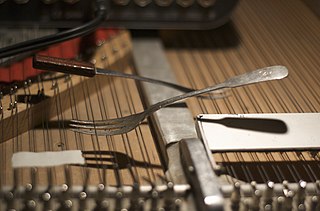
A prepared piano is a piano that has had its sounds temporarily altered by placing bolts, screws, mutes, rubber erasers, and/or other objects on or between the strings. Its invention is usually traced to John Cage's dance music for Bacchanale (1940), created for a performance in a Seattle venue that lacked sufficient space for a percussion ensemble. Cage has cited Henry Cowell as an inspiration for developing piano extended techniques, involving strings within a piano being manipulated instead of the keyboard. Typical of Cage's practice as summed up in the Sonatas and Interludes (1946–48) is that each key of the piano has its own characteristic timbre, and that the original pitch of the string will not necessarily be recognizable. Further variety is available with use of the una corda pedal.

Henry Dixon Cowell was an American composer, writer, pianist, publisher, teacher and the husband of Sidney Robertson Cowell. Earning a reputation as an extremely controversial performer and eccentric composer, Cowell became a leading figure of American avant-garde music for the first half of the 20th century — his writings and music serving as a great influence to similar artists at the time, including Lou Harrison, George Antheil, and John Cage, among others. He is considered one of America's most important and influential composers.

Harry Partch was an American composer, music theorist, and creator of unique musical instruments. He composed using scales of unequal intervals in just intonation, and was one of the first 20th-century composers in the West to work systematically with microtonal scales, alongside Lou Harrison. He built his own instruments in these tunings on which to play his compositions, and described the method behind his theory and practice in his book Genesis of a Music (1947).

Lou Silver Harrison was an American composer, music critic, music theorist, painter, and creator of unique musical instruments. Harrison initially wrote in a dissonant, ultramodernist style similar to his former teacher and contemporary, Henry Cowell, but later moved toward incorporating elements of non-Western cultures into his work. Notable examples include a number of pieces written for Javanese style gamelan instruments, inspired after studying with noted gamelan musician Kanjeng Notoprojo in Indonesia. Harrison would create his own musical ensembles and instruments with his partner, William Colvig, who are now both considered founders of the American gamelan movement and world music; along with composers Harry Partch and Claude Vivier, and ethnomusicologist Colin McPhee.
A tone cluster is a musical chord comprising at least three adjacent tones in a scale. Prototypical tone clusters are based on the chromatic scale and are separated by semitones. For instance, three adjacent piano keys struck simultaneously produce a tone cluster. Variants of the tone cluster include chords comprising adjacent tones separated diatonically, pentatonically, or microtonally. On the piano, such clusters often involve the simultaneous striking of neighboring white or black keys.
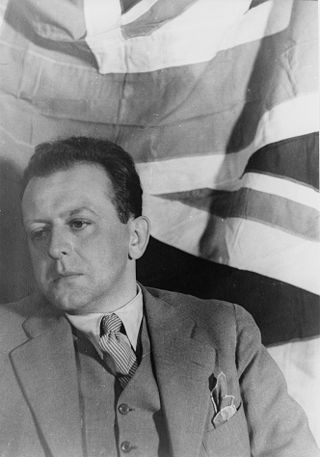
Colin Carhart McPhee was a Canadian-American composer and ethnomusicologist. He is best known for being the first Western composer to make a musicological study of Bali, and to develop American gamelan along with fellow composer Lou Harrison. He wrote original music influenced by that of Bali and Java, decades before such compositions that were based on world music became widespread.
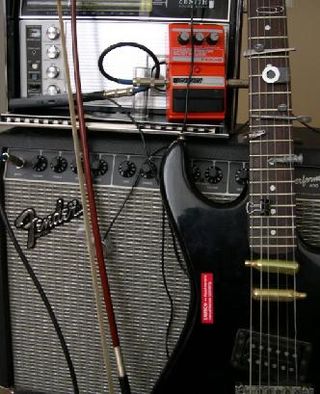
In music, extended technique is unconventional, unorthodox, or non-traditional methods of singing or of playing musical instruments employed to obtain unusual sounds or timbres.
New-age is a genre of music intended to create artistic inspiration, relaxation, and optimism. It is used by listeners for yoga, massage, meditation, and reading as a method of stress management to bring about a state of ecstasy rather than trance, or to create a peaceful atmosphere in homes or other environments. It is sometimes associated with environmentalism and New Age spirituality; however, most of its artists have nothing to do with "New Age spirituality," and some even reject the term.
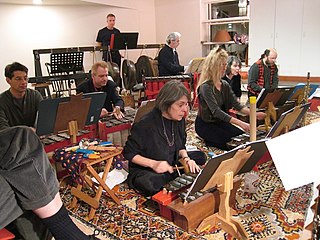
American gamelan could refer to both instruments and music; the term has been used to refer to gamelan-style instruments built by Americans, as well as to music written by American composers to be played on gamelan instruments. American gamelan music usually has some relationship to the gamelan traditions of Indonesia, as found primarily on the islands of Java and Bali in a variety of styles. Many American compositions can be played on Indonesian or American-made instruments. Indonesian gamelan can be made of a variety of materials, including bronze, iron, or bamboo. American gamelan builders used all sorts of materials including aluminum, tin cans, car hubcaps, steel, antique milk-strainers, etc. American gamelan may also describe the original music of American ensembles working with traditional instruments.
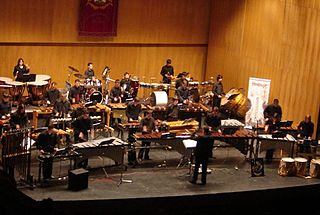
A percussion ensemble is a musical ensemble consisting of only percussion instruments. Although the term can be used to describe any such group, it commonly refers to groups of classically trained percussionists performing primarily classical music. In America, percussion ensembles are most commonly found at conservatories, though some professional groups, such as Nexus and So Percussion exist. Drumlines and groups who regularly meet for drum circles are two other forms of the percussion ensemble.

The Rhythmicon—also known as the Polyrhythmophone—was an electro-mechanical musical instrument designed and built by Leon Theremin for composer Henry Cowell, intended to reveal connections between rhythms, pitches and the harmonic series. It used a series of perforated spinning disks, similar to a Nipkow disk, to interrupt the flow of light between bulbs and phototoreceptors aligned with the disk perforations. The interrupted signals created oscillations which were perceived as rhythms or tones depending on the speed of the disks. Although it generated both pitches and rhythms, it has often been described as the world's first drum machine.

Determining the boundaries between the continents is generally a matter of geographical convention. Several slightly different conventions are in use. The number of continents is most commonly considered seven but may range as low as four when Afro-Eurasia and the Americas are both considered as single continents. An island can be considered to be associated with a given continent by either lying on the continent's adjacent continental shelf or being a part of a microcontinent on the same principal tectonic plate. An island can also be entirely oceanic while still being associated with a continent by geology or by common geopolitical convention. Another example is the grouping into Oceania of the Pacific Islands with Australia and Zealandia.
The American Five is a collective name applied by some writers to the modernist American composers Charles Ives (1874–1954), John J. Becker (1886–1961), Wallingford Riegger (1885–1961), Henry Cowell (1897–1965), and Carl Ruggles (1876–1971). They were noted for their modernist and often dissonant compositions which broke away from European compositional styles to create a distinctly American style. The name was coined in imitation of the group of Russian composers called The Five.
Construction is the title of several pieces by American composer John Cage, all scored for unorthodox percussion instruments. The pieces were composed in 1939–42 while Cage was working at the Cornish School of the Arts in Seattle, Washington, and touring the West Coast with a percussion ensemble he and Lou Harrison had founded. The series comprises three Constructions. A piece titled Fourth Construction, mentioned in several sources, is apparently either an unfinished work from 1942 or, more likely, an early title of the work we now know as Imaginary Landscape No. 2 .
Music & Arts is a classical and jazz record label founded in Berkeley, California by Frederick Maroth.
Irving Foster Morrow was an American architect best known for designing the Golden Gate Bridge.
Olive Thompson Cowell (1887–1984) was a patron of the arts and music, and a professor of International Relations.











